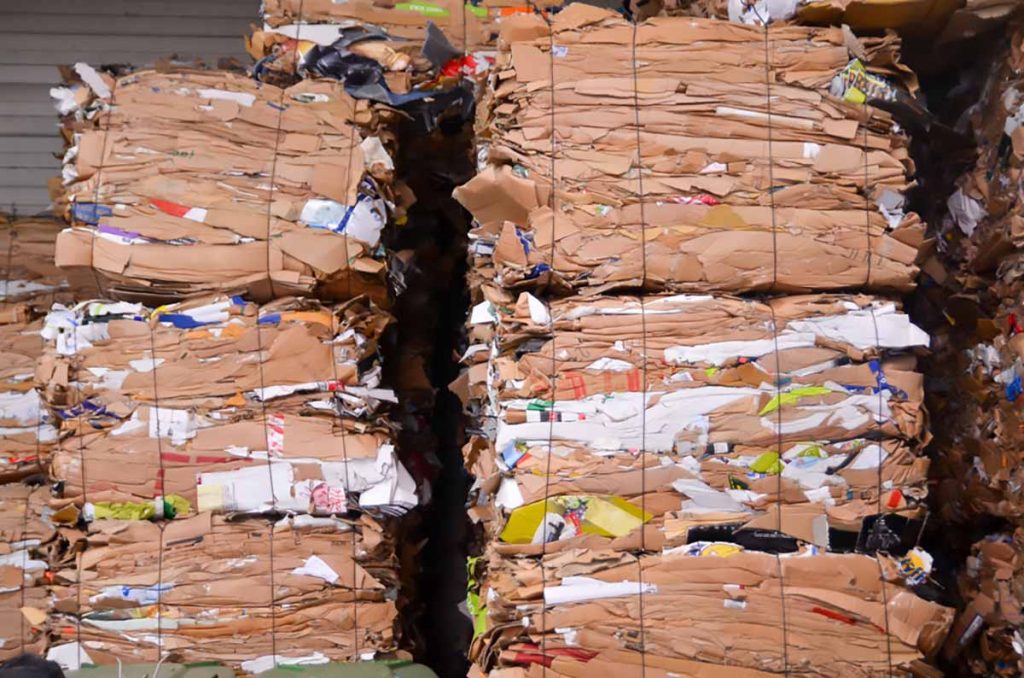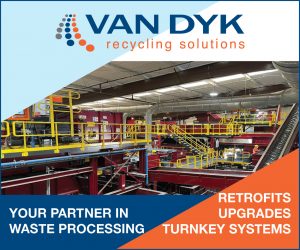
According to AF&PA CEO Heidi Brock, analysts left out key information about boxes used in exports. | Vitaliy Kyrychuk/Shutterstock
Paper recycling is an environmental success story. Facts and data matter, especially when it comes to measuring and tracking the paper recycling rate over time.
The American Forest & Paper Association (AF&PA) is a data-driven organization, and we rely on complete data to calculate the annual paper and cardboard recycling rates.
These are rates we have tracked for three decades, and they help inform our industry – which plays an active role in paper recycling’s success.
Therefore, it is imperative we supply the most accurate data on paper recycling – data that was recently called into question during a session at the 2022 Resource Recycling Conference, suggesting the OCC recycling rate is lower than reported.

Heidi Brock
However, the OCC statistics presented at the conference do not serve as a point of comparison to AF&PA’s national OCC recycling rate.
Missing from their calculation is an accounting for boxes used to export products from the United States. Their estimated rate also makes assumptions about imports of packaged products and the change in OCC collections in 2021.
To clear up confusion, let’s talk about the equation. AF&PA’s OCC recycling rate is based on a mathematical formula, calculated by dividing the U.S. recovery of OCC for recycling by the U.S. supply of containerboard over a given period, usually one year.
The statistics and methodology used to calculate the United States’ cardboard recycling rate are also consistent with those used by major U.S. trading partners, and the resulting rate is similar to the recycling rate published by the U.S. Environmental Protection Agency.
The AF&PA has published the annual U.S. OCC recycling rate since the introduction of the Corrugated Recycles symbol in 1993. The rate follows a steady trend upward from 54% in 1993 to the current rate of 91.4%. And the cardboard recycling rate has met or exceeded 82% since 2009.
What the Bloomberg Intelligence/Circular Ventures estimate attempts to do is fill in a gap in the data: how much OCC is available for recycling from the packaging on imported products. This gap in the data can fluctuate depending on the trade balance in any given year – making it a moving target. Corrugated packaging is distributed and collected across several channels, including industrial, commercial retail, commercial office and residential.
This is where the Bloomberg Intelligence/Circular Ventures estimate is incomplete. They relied on data on the number of shipping containers destined for U.S. retail outlets and an estimate for the number of corrugated boxes in each shipping container to factor in imported product packaging – boxes that arrive in the U.S. as packaging for products imported from other countries – and add it to the available U.S. supply of OCC that can be recovered. But this approach neglects to recognize U.S. exports of products in corrugated boxes – exaggerating available supply of OCC and artificially reducing the recycling rate.
While AF&PA stands by our method for calculating the OCC recycling rate, we feel it is important to share our method for calculating a statistically sound “effective” rate. AF&PA uses U.S. Census Bureau data on annual imports and exports of packaged goods and data from the Fibre Box Association on “box intensity” – the amount of corrugated packaging used for each type of product imported and exported to calculate our “effective” rate.
When factoring in estimates for both imports and exports of product packaging, AF&PA found an “effective” OCC recycling rate in the 79.2% to 84.7% range, or an average of 82.1% for 2021.
Keep in mind this is an estimated “effective” rate, not a precise number. But you’ll see our average of 82.1%, though not based on the more accurate and complete data used to calculate the OCC recycling rate, is significantly higher than the 69% presented by Bloomberg Intelligence/Circular Ventures.
Taken together, the data tell us – without question – the OCC recycling rate has remained consistently high.
Paper recycling is one of the best examples of how we, as a society, are working to protect our environment and contribute to a circular economy. Our industry is actively producing more sustainable products, investing in manufacturing infrastructure that will use recovered paper, increasing the availability of community recycling and educating people about the best ways to recycle paper and paper-based packaging products.
The AF&PA is committed to advancing a sustainable paper and packaging industry, through our team of experts with decades of industry experience and the highest quality data.
Heidi Brock is the President & CEO of the American Forest & Paper Association in Washington, DC.
The views and opinions expressed are those of the author and do not imply endorsement by Resource Recycling, Inc. If you have a subject you wish to cover in an op-ed, please send a short proposal to [email protected] for consideration.
More stories about fiber
- Fiber end users talk price increases, demand outlook
- Pizza box demand declining, report says
- Nebraska city to accept paper cups in curbside bins



